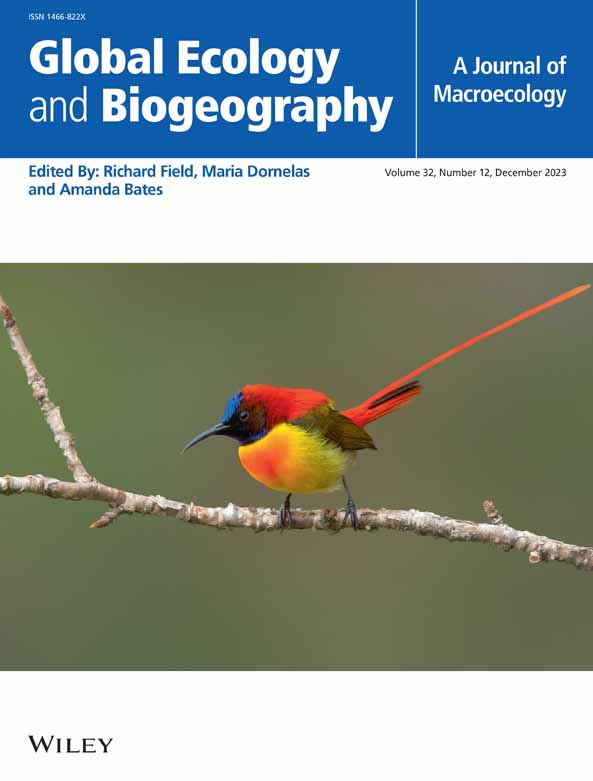Phylogenetic Niche Conservatism Drives Floristic Assembly Across Mexico's Temperate-Tropical Divide
Abstract
Aim
We addressed the role of climate and historical biogeography on the temperate-tropical divide in Mexico, also known as the “Mexican Transition Zone” (MTZ). We asked: (1) How phylogenetic structure and species composition vary across the MTZ, (2) What roles dispersal, in situ speciation and climatic filtering play in assembling regional floras, and (3) How historical biogeographic events and climate interact to maintain the distinct floristic communities of the transition zone.
Location
Mexico.
Time Period
Present day.
Major Taxa Studied
Vascular plants.
Methods
We analysed occurrence data from c. 3 million records, combining herbarium specimens and citizen science observations, using grade of membership (GoM) models to cluster species across all of Mexico. We combined these models with climate data and a phylogeny of 20,947 vascular plant taxa to investigate how climate and evolutionary history influence floristic turnover. We modelled transitions between temperate and tropics to understand the importance of different biogeographic events in assembling floristic diversity.
Results
Plant composition of the MTZ is determined primarily by minimum temperature and temperature seasonality. We found strong signals of niche conservatism, especially for clades of northern, Nearctic origin, which track their niche as they move southward into the MTZ by occupying higher elevation niches. Furthermore, vascular plant diversity patterns in the temperate and transition zones have been driven largely through dispersal, whereas Neotropical plant diversity is shaped disproportionately by in situ cladogenesis.
Main Conclusions
Plant specimen records make it possible to identify transitions in plant communities that correspond to seasonality and freezing and explain biodiversity patterns in terms of macroevolutionary processes. We highlight the contrasting roles of speciation, dispersal, and niche conservatism in generating biodiversity at temperate–tropical transitions. Together, these results highlight the interplay between historical biogeography and contemporary ecological processes in shaping biodiversity at the meeting place of temperate and tropical realms.


 求助内容:
求助内容: 应助结果提醒方式:
应助结果提醒方式:


